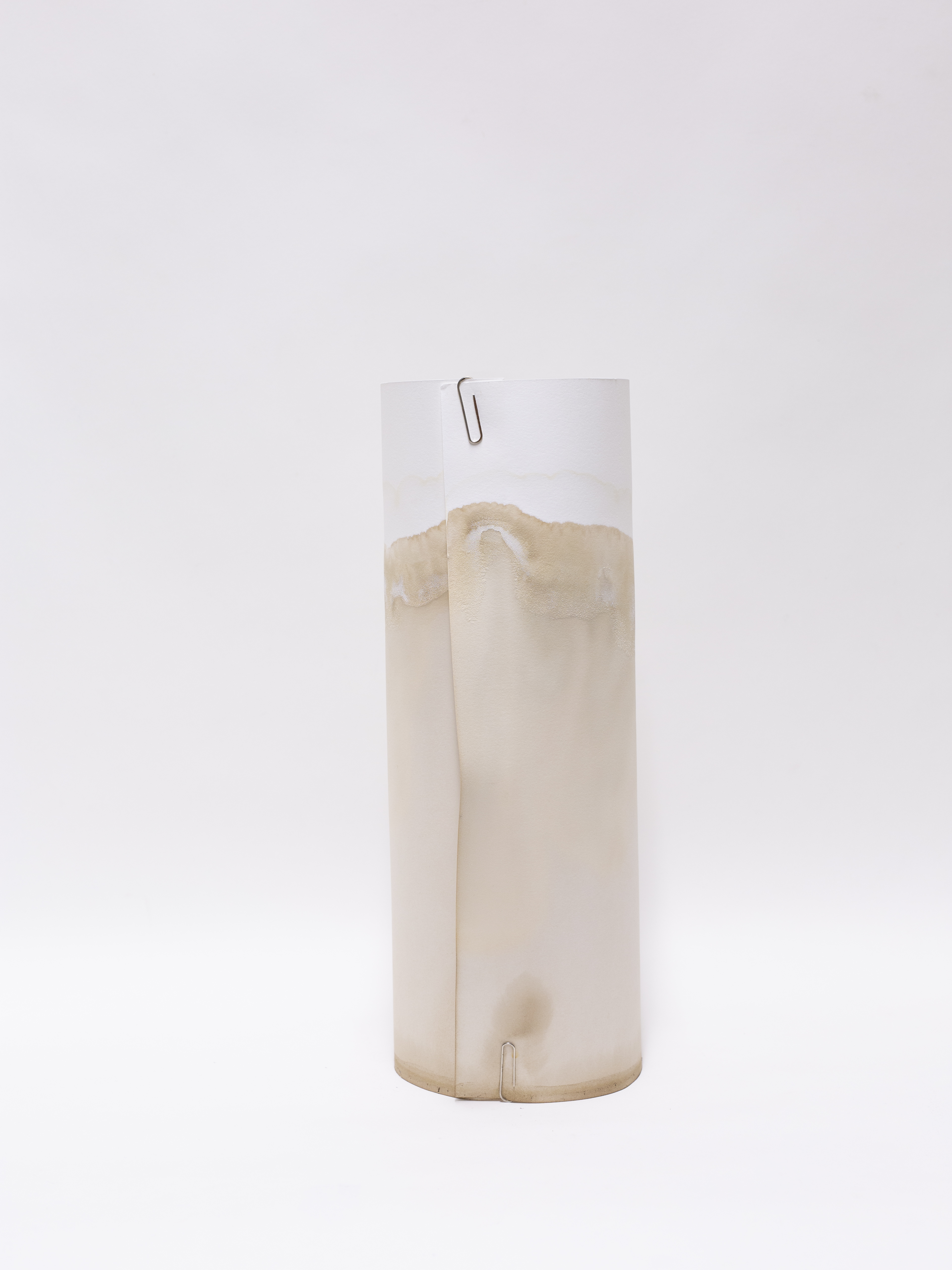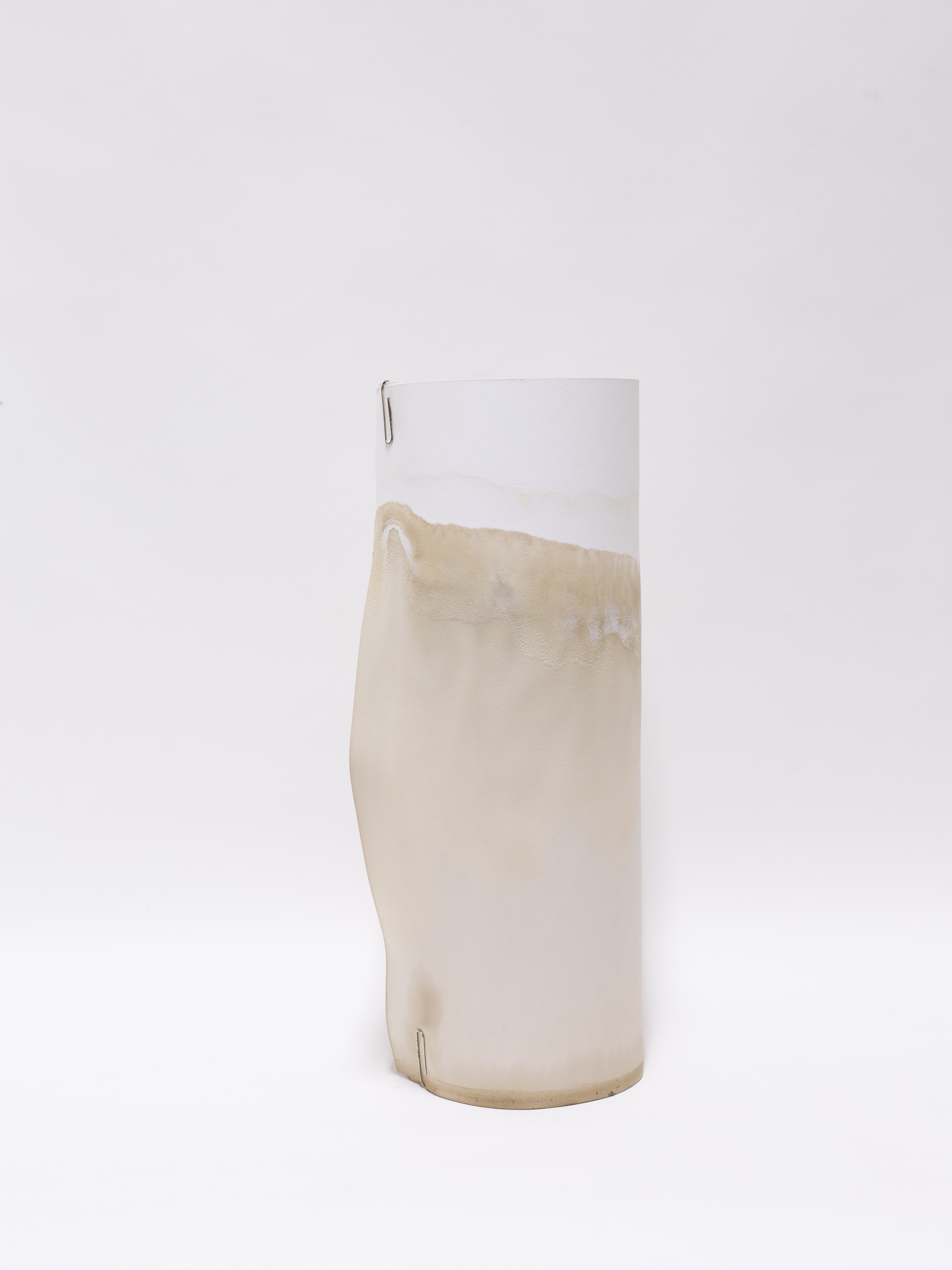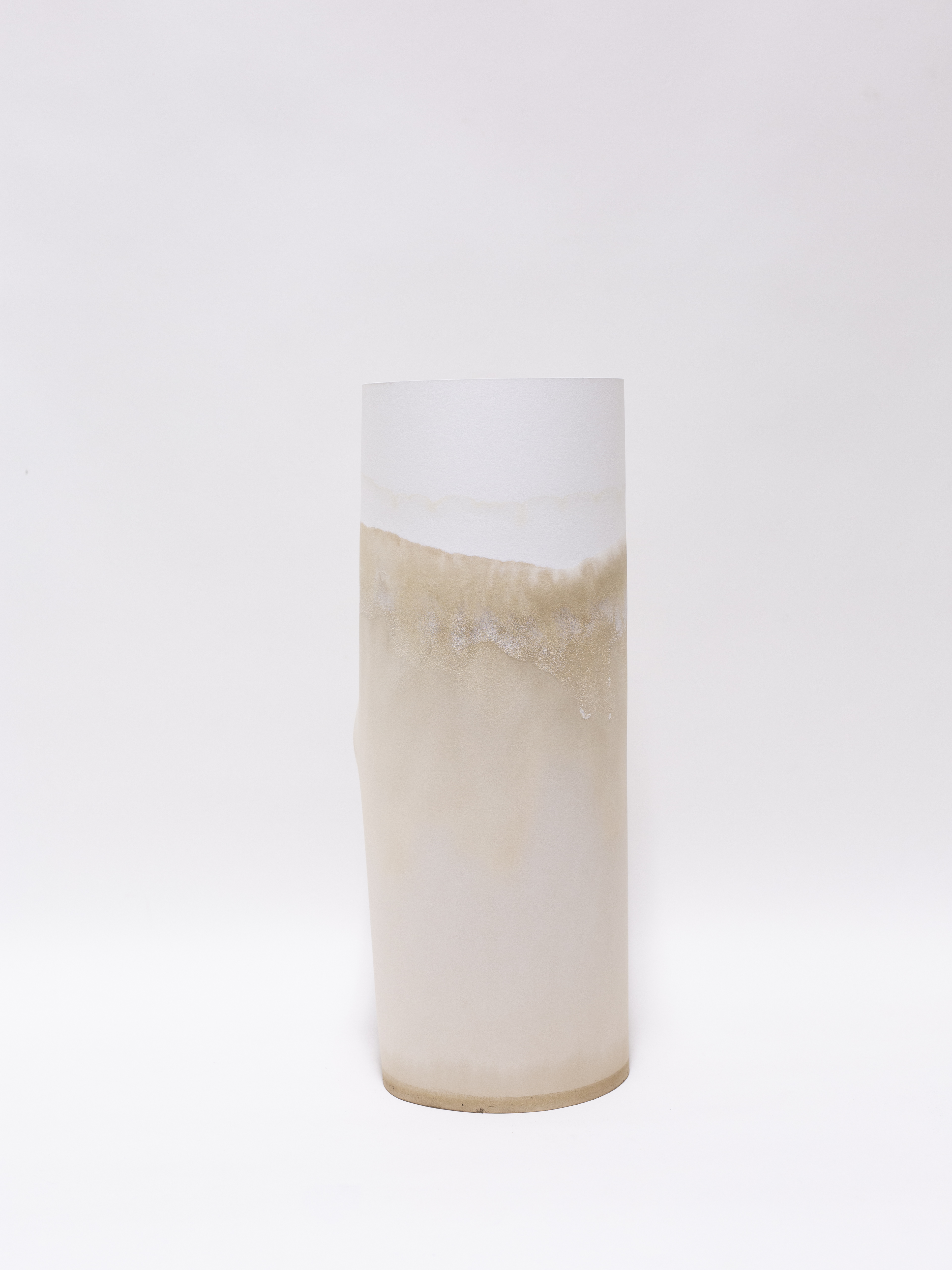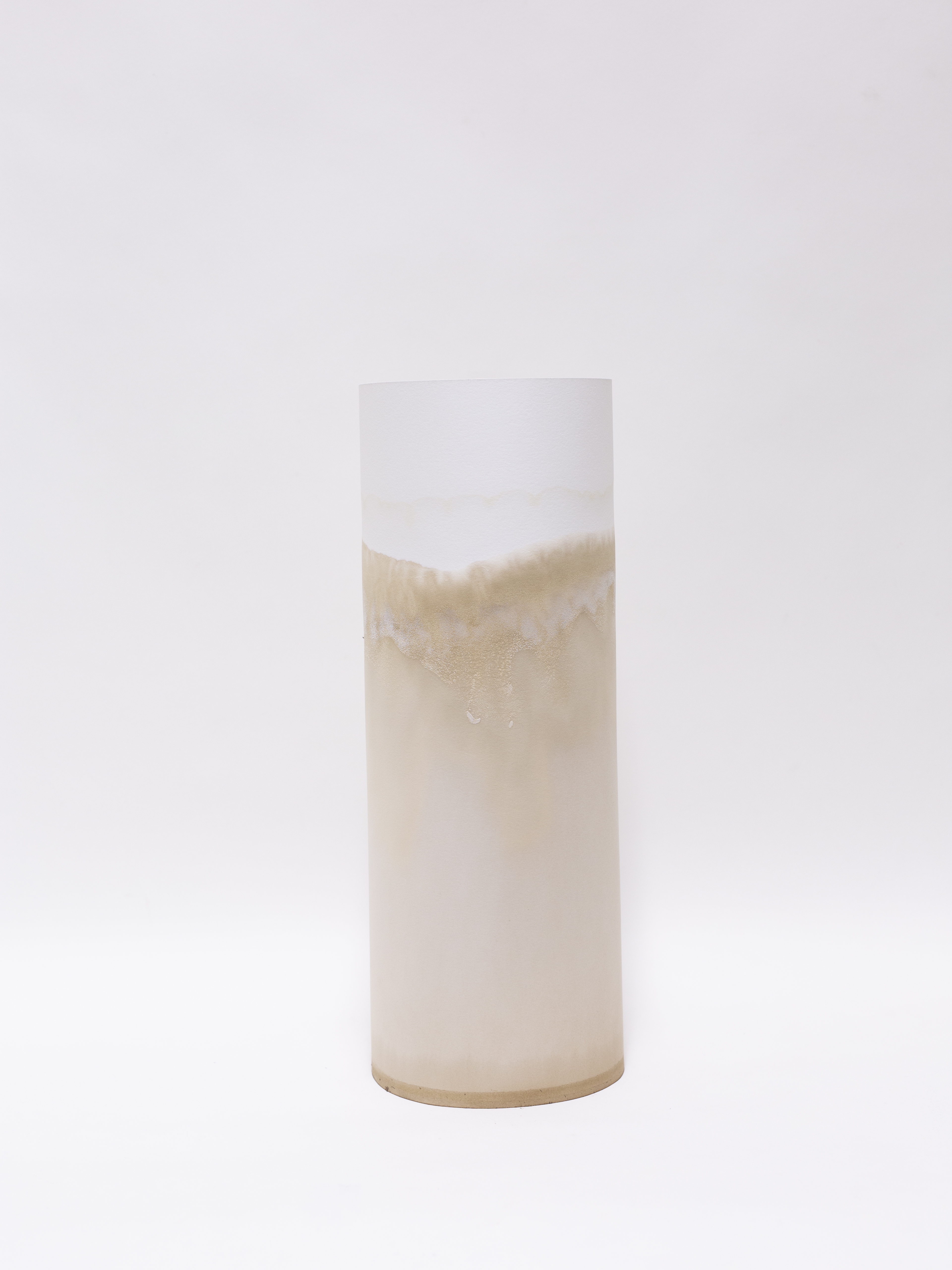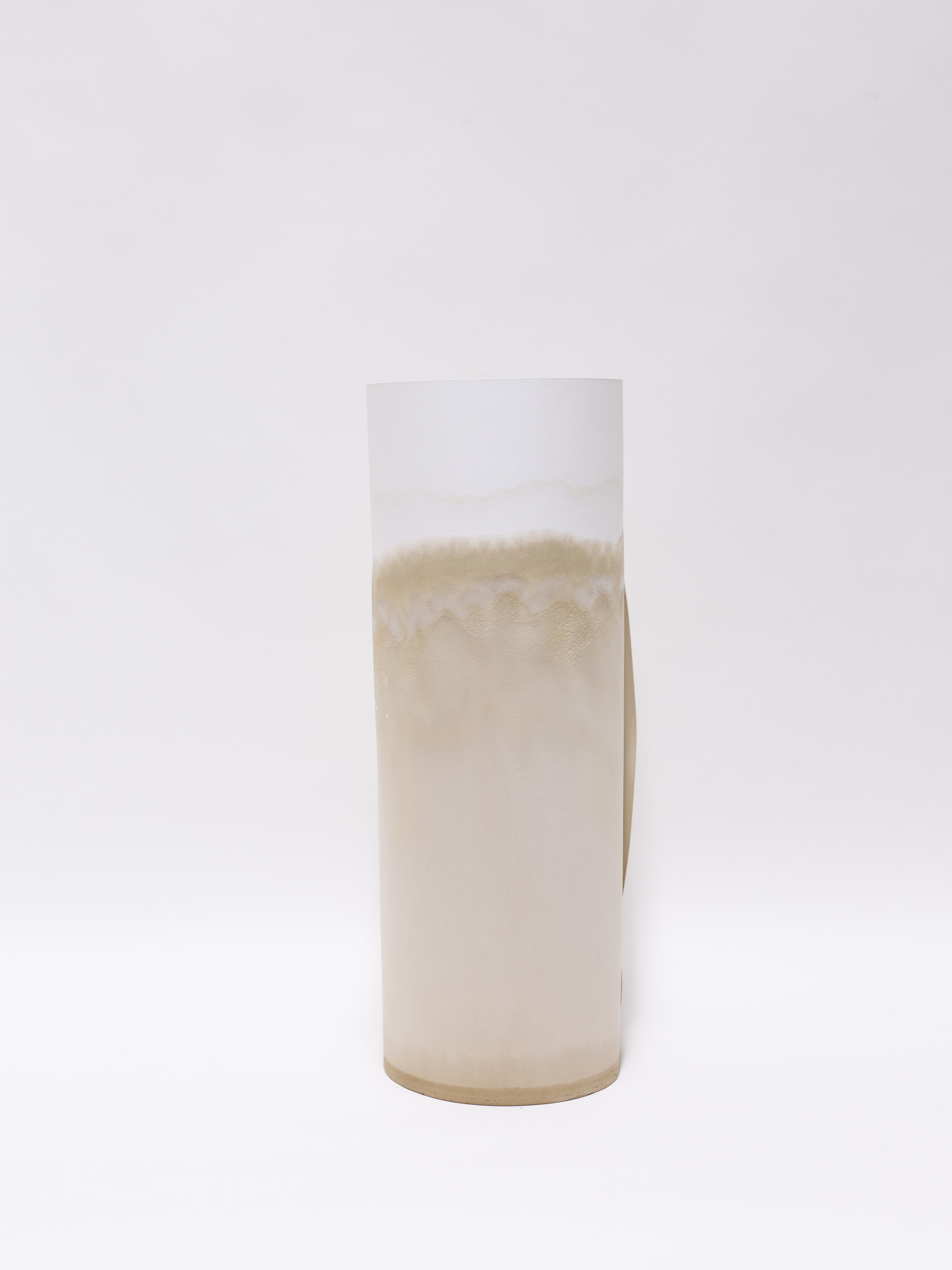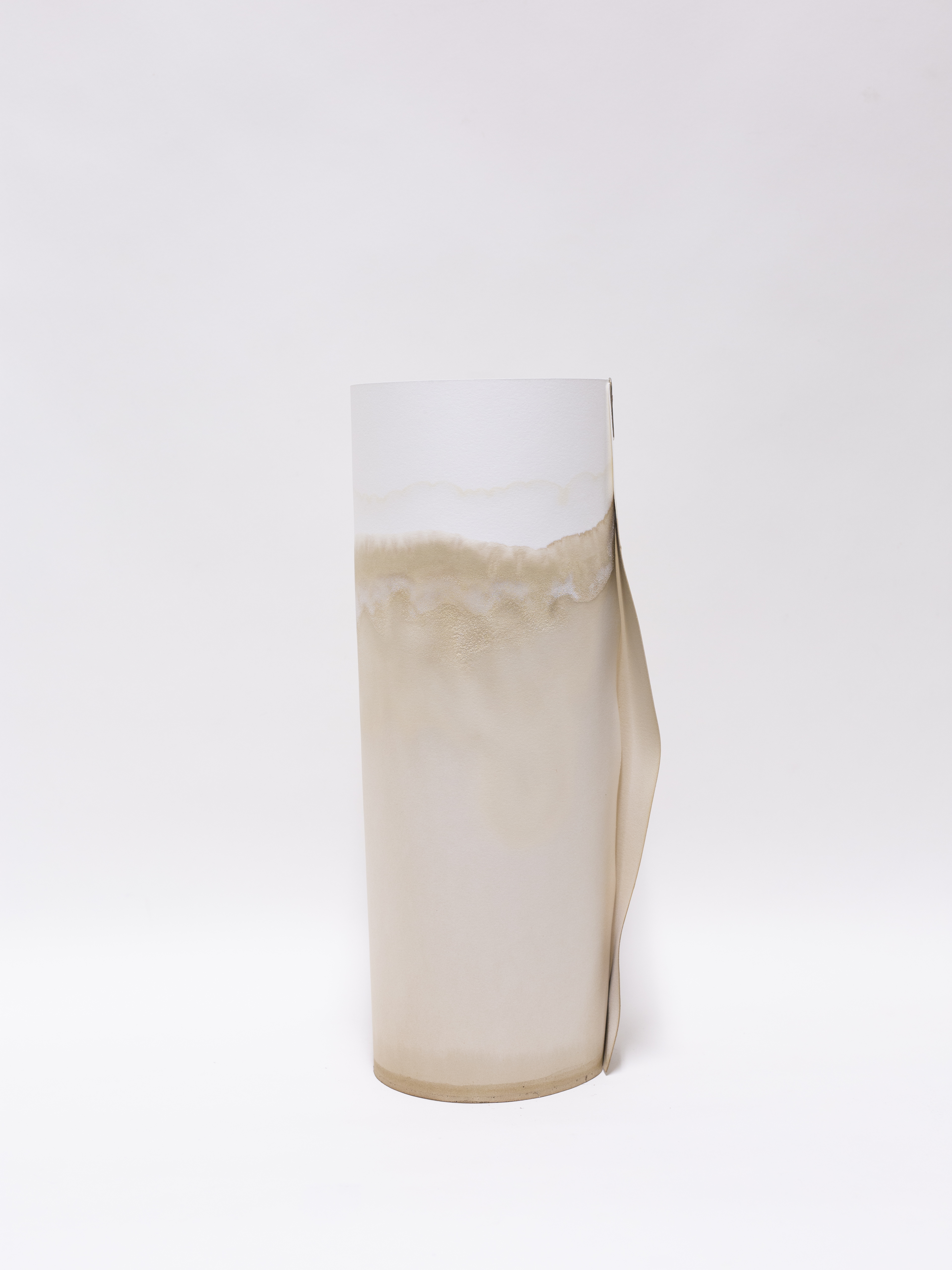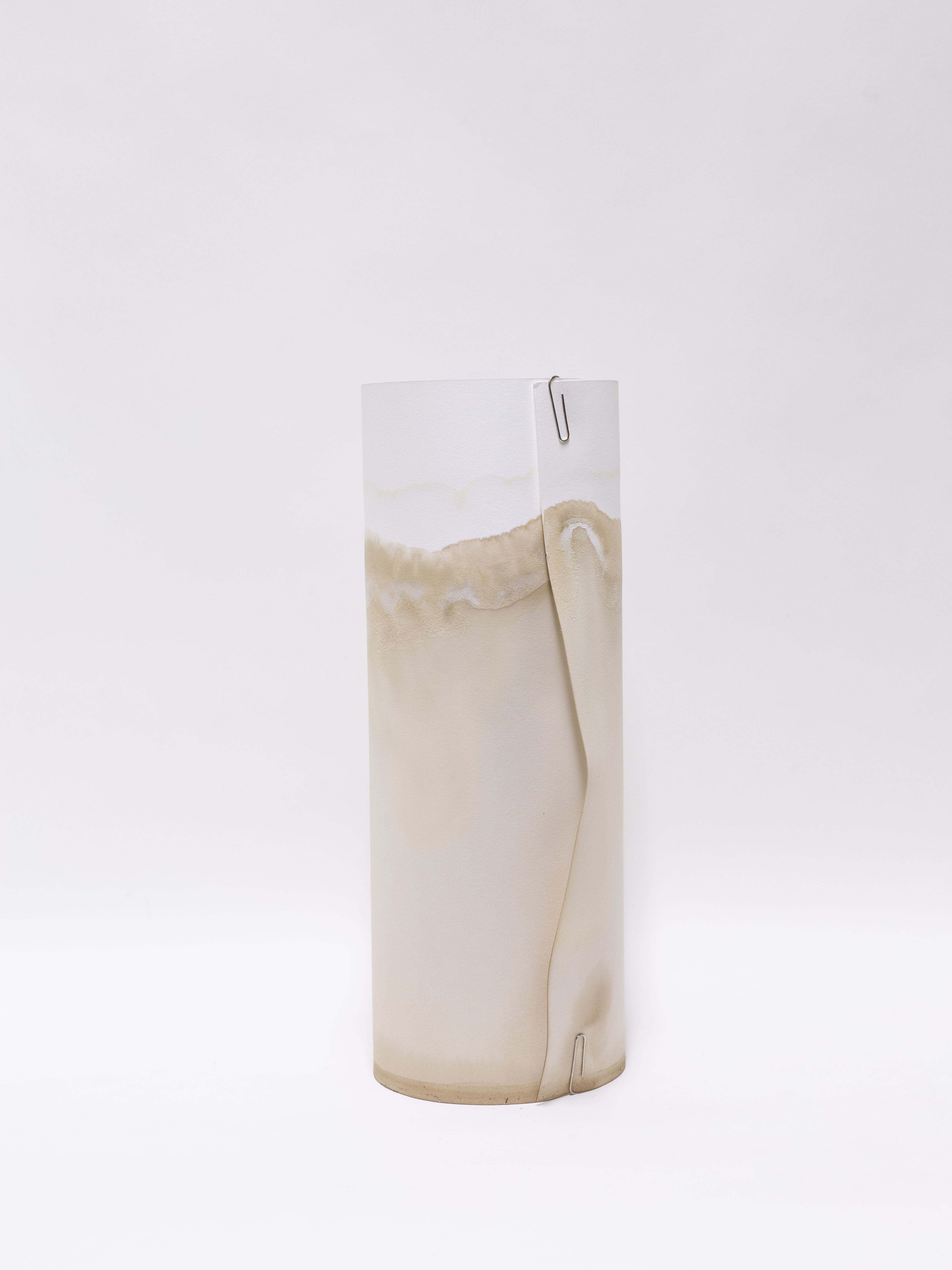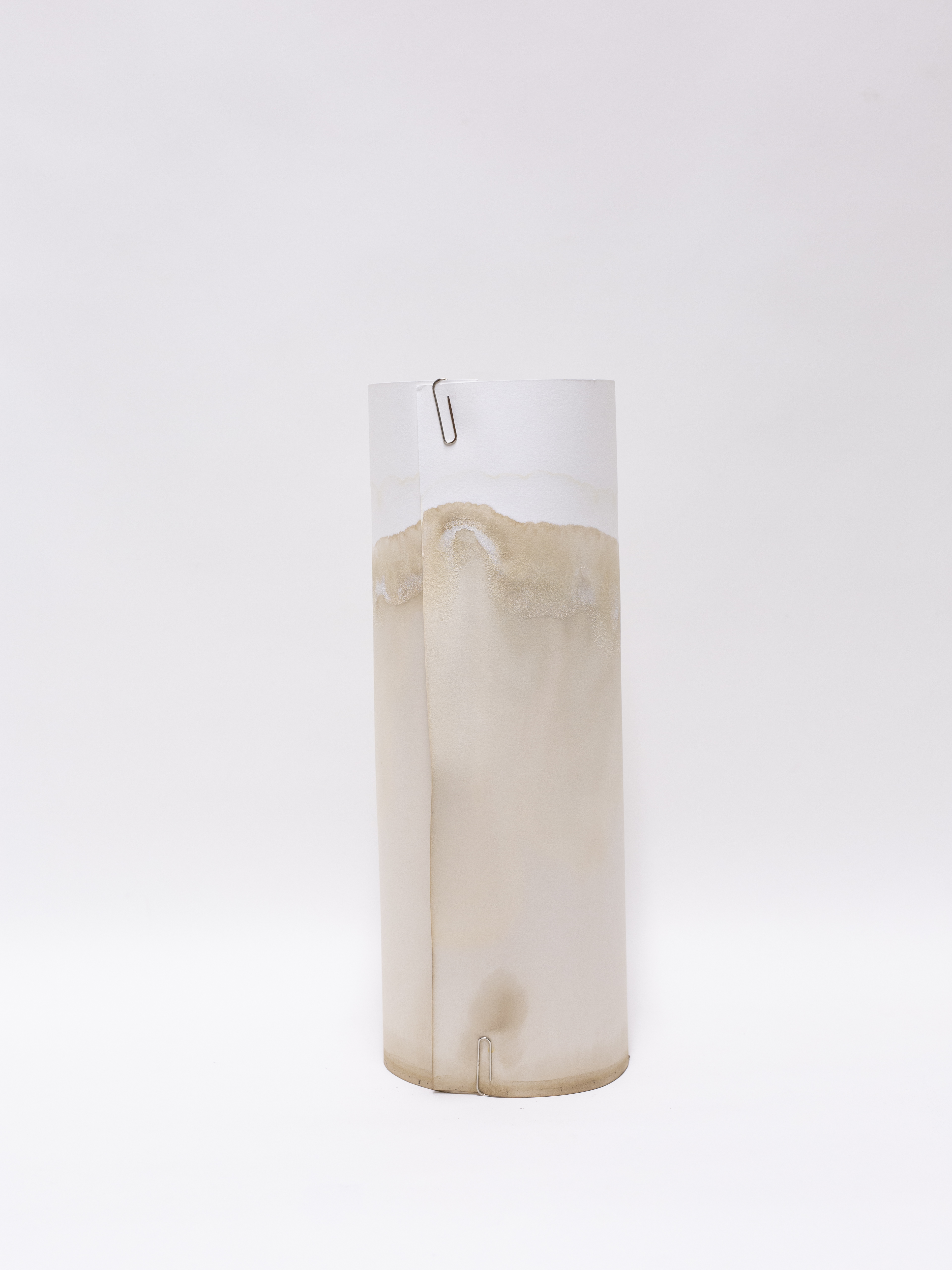After a Mudgram is made, the soil is left with flushed silver, prompting Segers to search
how these left-overs could be used to create new images. For the series of
works that make up waste/land, he placed a cylinder of specialized
lab paper used for chromatography on top of the muddy remnants, letting the
paper absorb the chemical elements and layering them in different tonalities from bottom to top.
This absorption technique was first developed by Lili Kolisko (1889–1976) to f.ex. visualize the interaction between minerals and the solar system. Segers activates this historical research of Kolisko by adapting the technique to earthly elements and exposing them to this new form of transformation.
This absorption technique was first developed by Lili Kolisko (1889–1976) to f.ex. visualize the interaction between minerals and the solar system. Segers activates this historical research of Kolisko by adapting the technique to earthly elements and exposing them to this new form of transformation.
Mudgram (residue), Dries Segers, 2024, chromatographic paper cones, paperclips,
polluted soil samples, different sizes
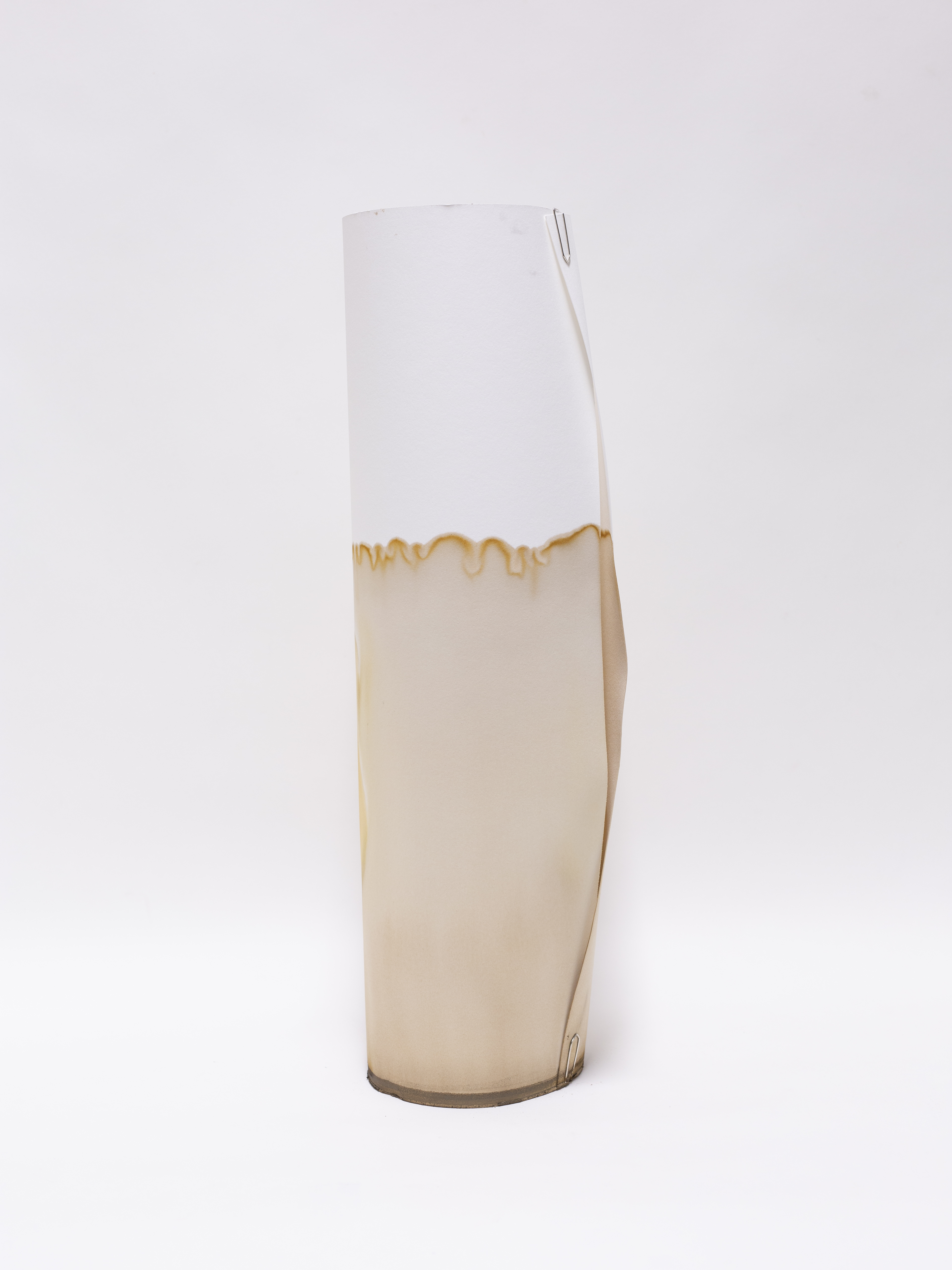
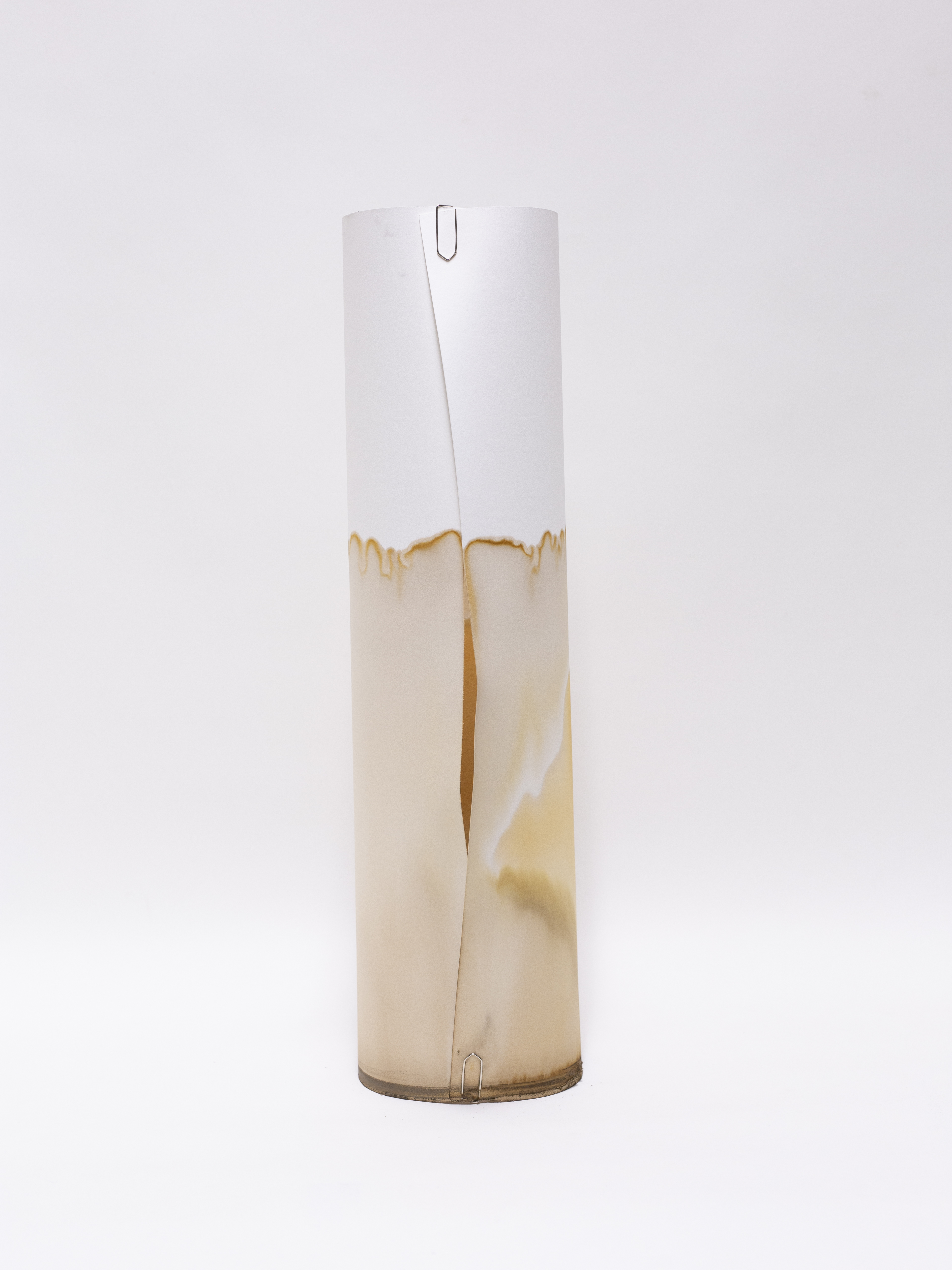
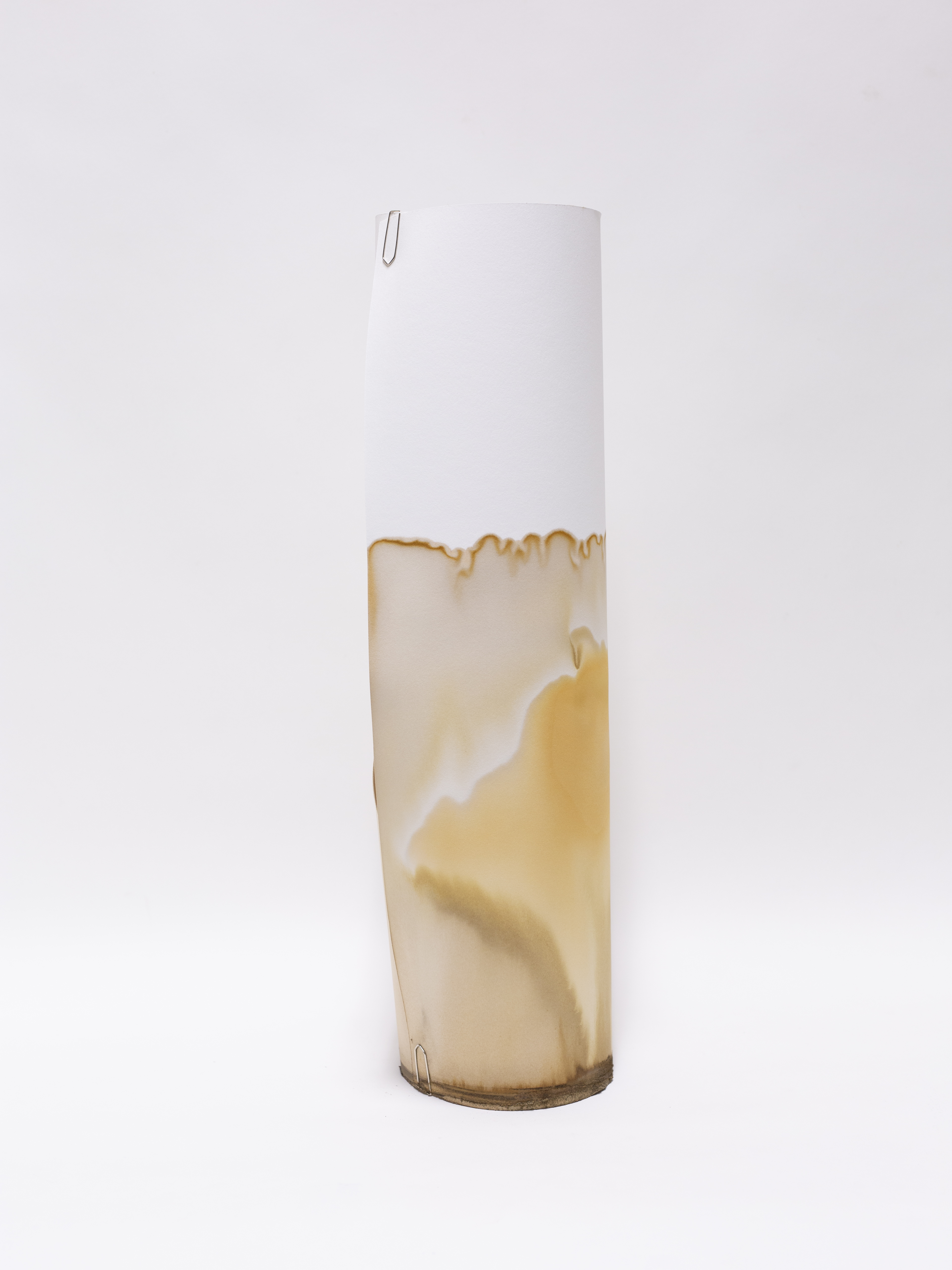
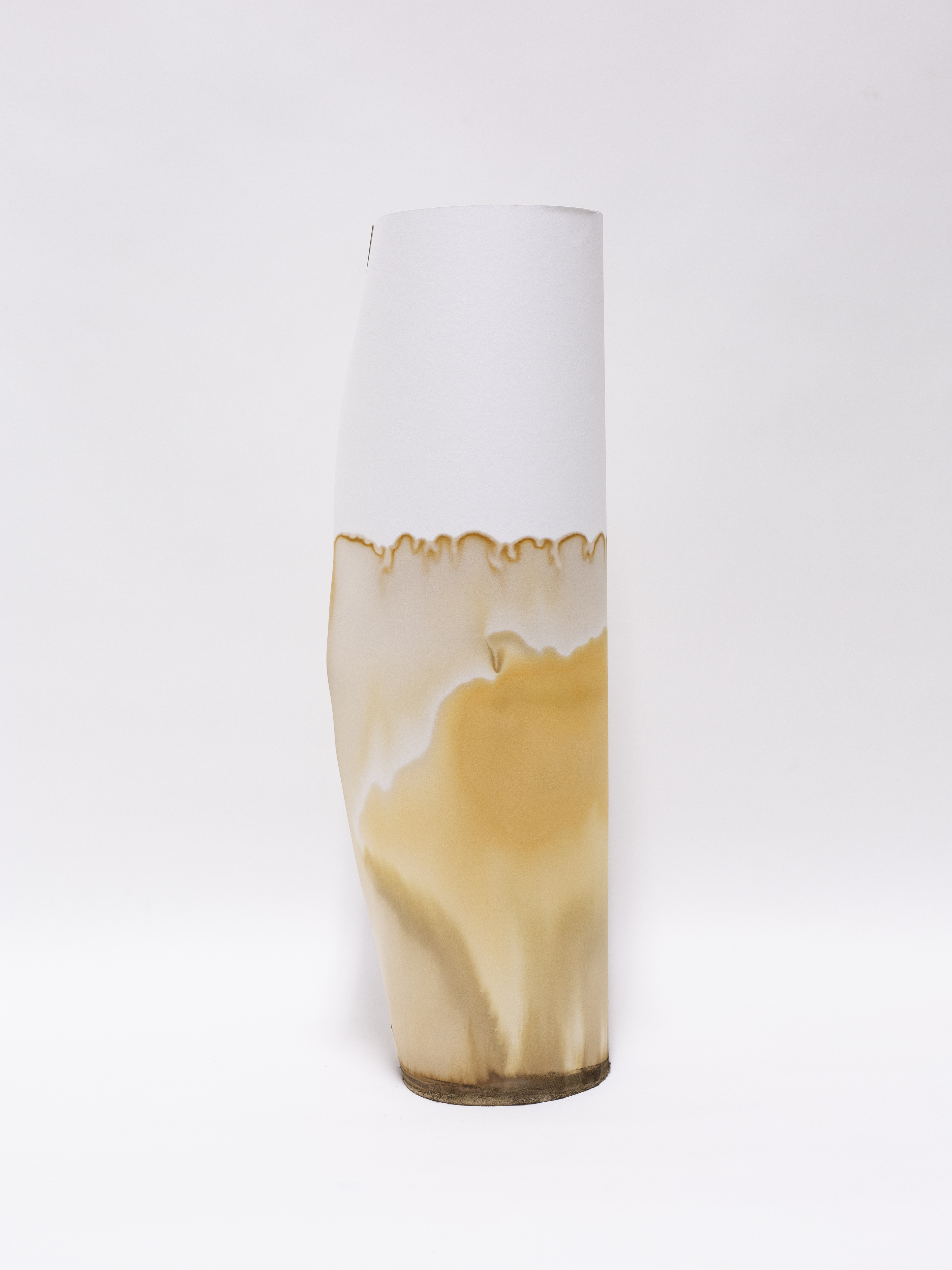
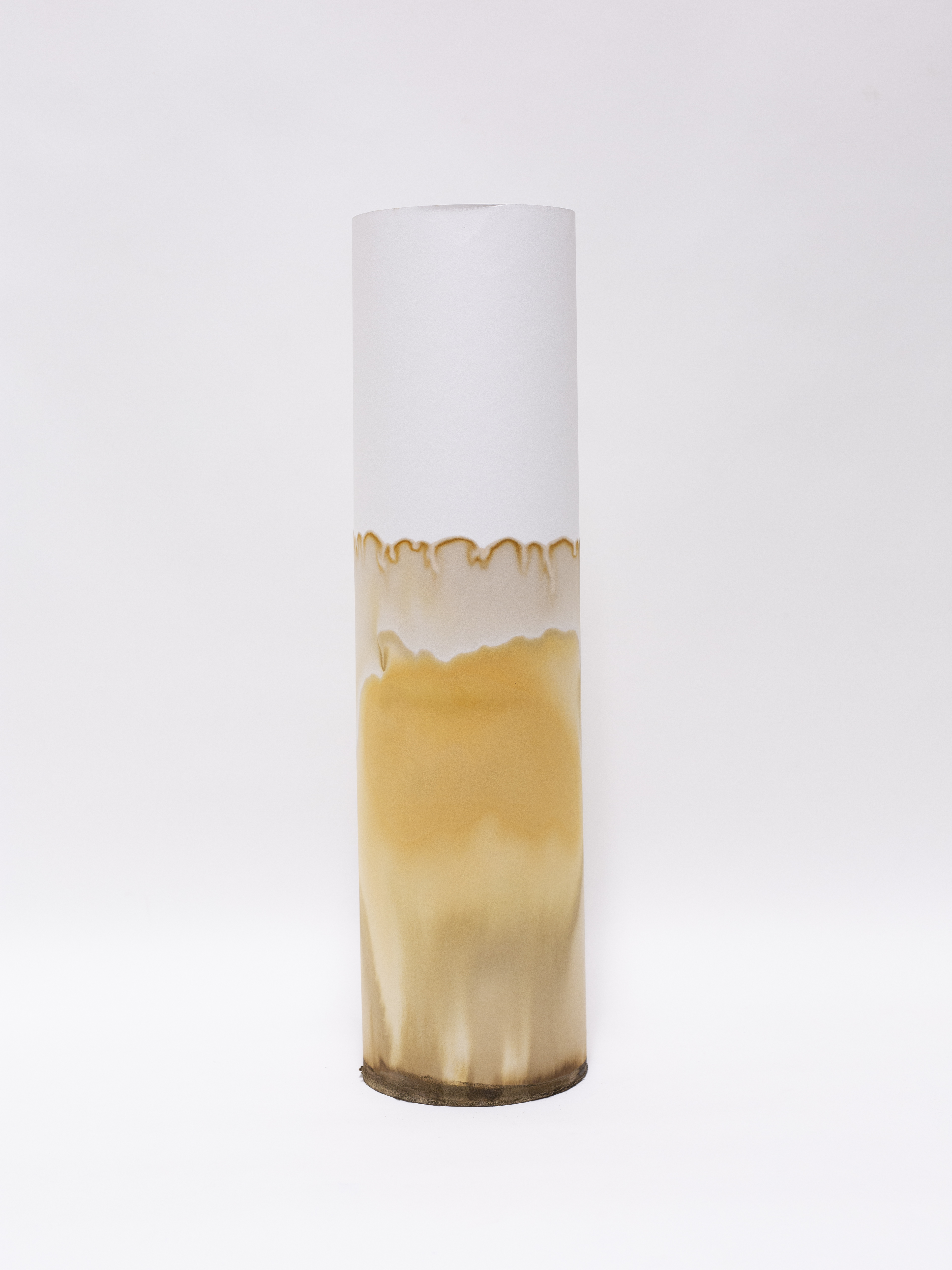
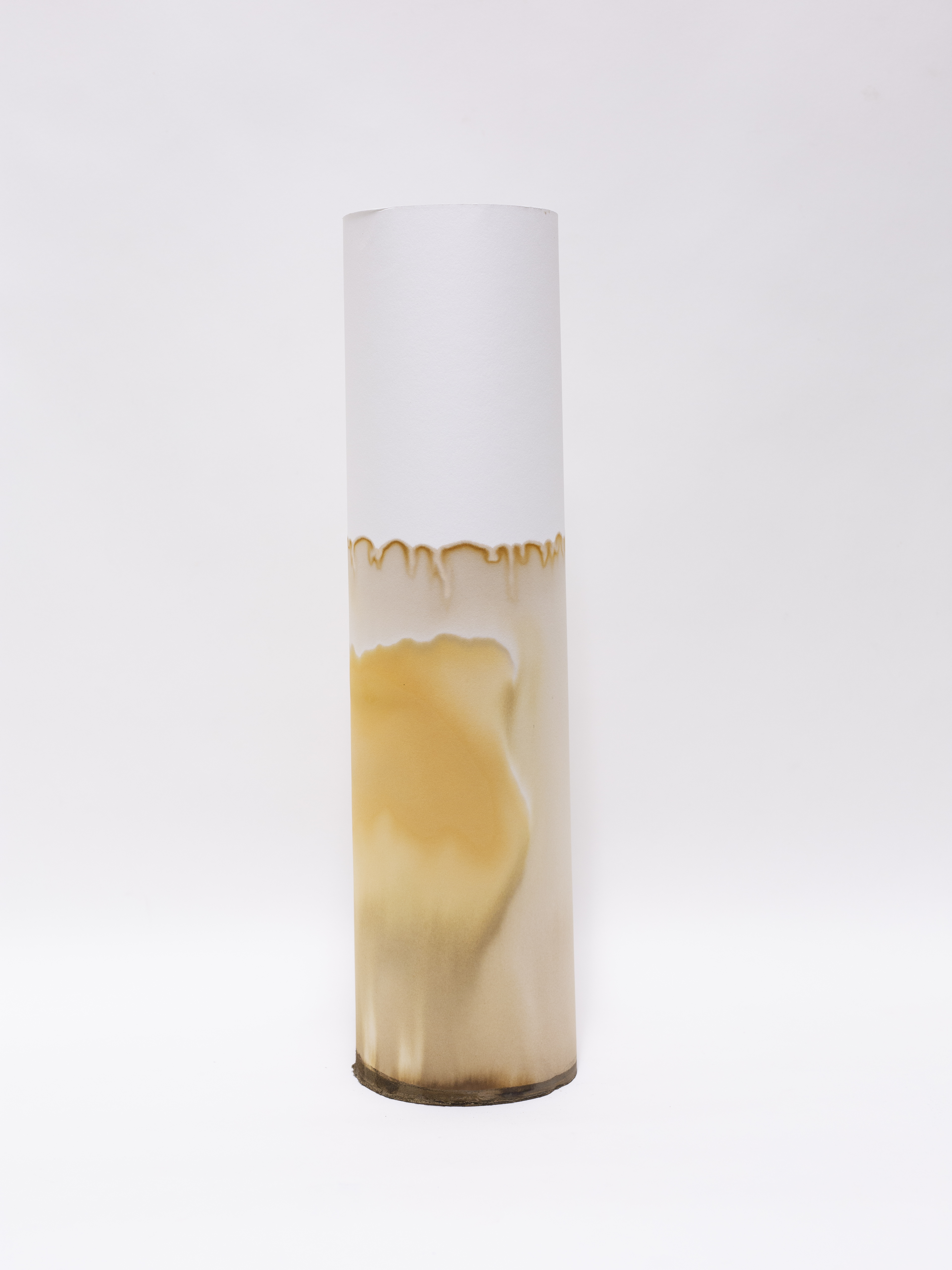
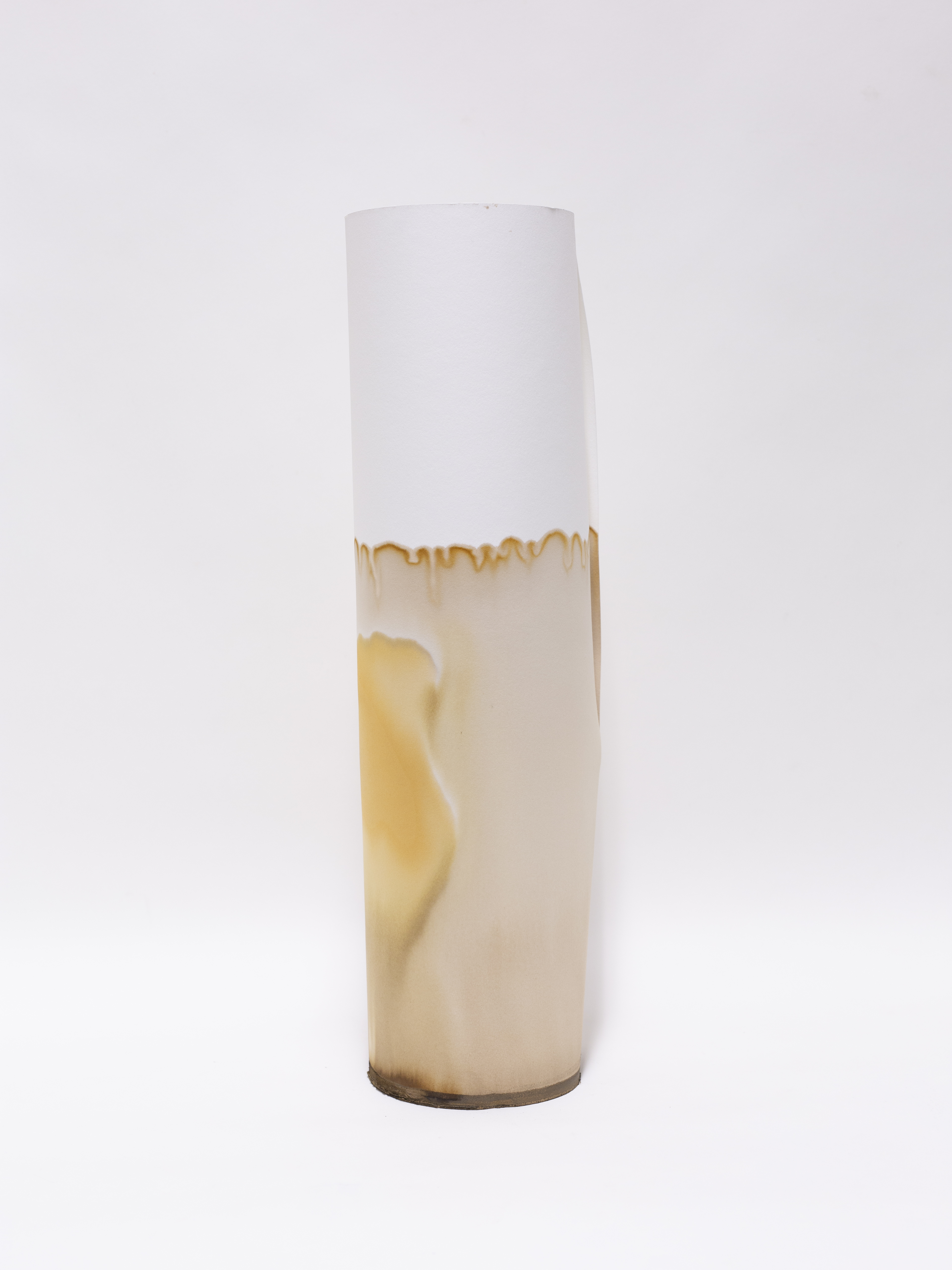
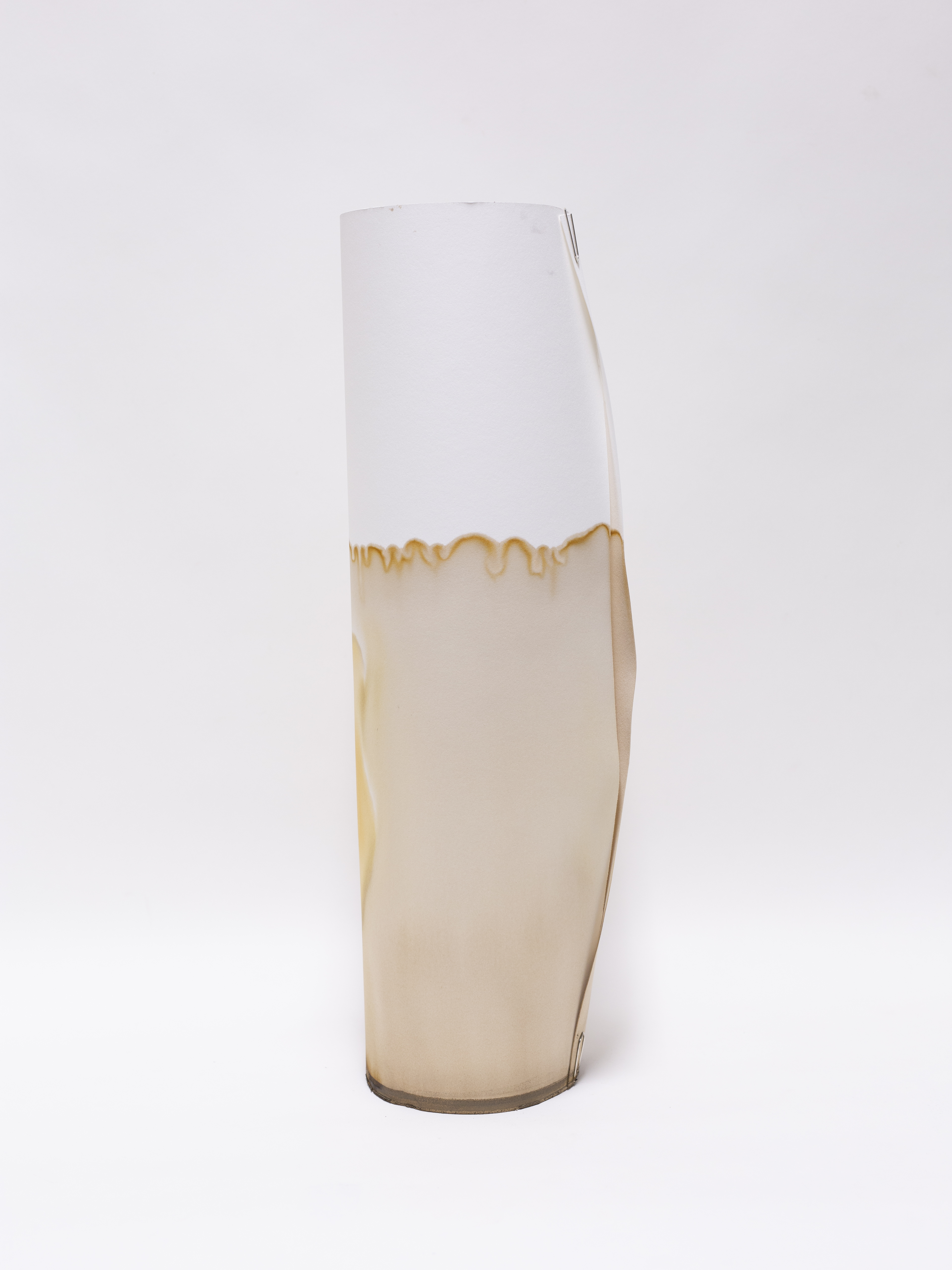



Exhibition view Moving the Photogram, during ARTICULATE Festival, Royal Academy of Fine Arts Antwerp, oktober 2024
 studioview, work in progress, cilinders
studioview, work in progress, cilinders